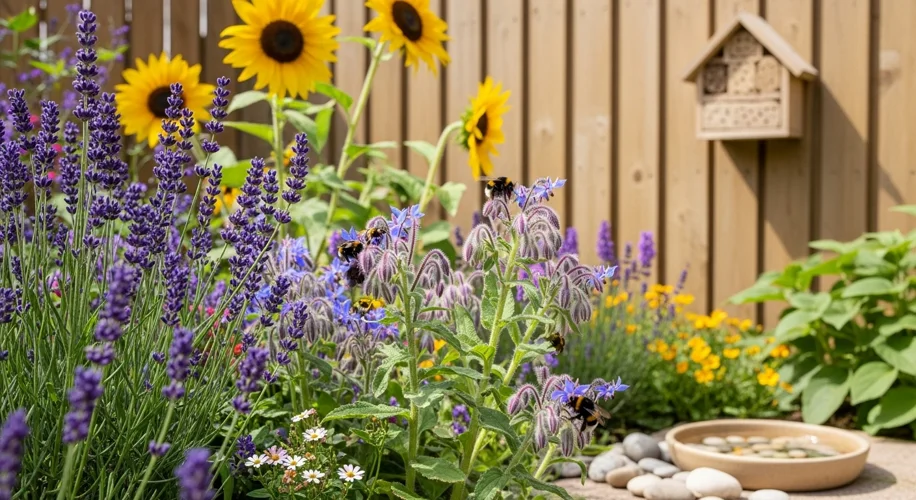Hey everyone, Elias here! You know how much I love getting my hands dirty in the garden and enjoying the fruits (and veggies!) of my labor. Lately, I’ve been thinking a lot about the little buzzers that make so much of it possible – our bees!
It’s truly amazing how much these tiny creatures do for our local ecosystems and even our dinner plates. I’ve been on a mission to make my suburban backyard a haven for them, and I’m excited to share how you can do the same. Creating a bee sanctuary isn’t just good for the bees; it’s a wonderful way to connect with nature and support the whole cycle of life in your own little corner of the world.
So, how do we build one of these buzzing paradises? It’s simpler than you might think!
1. Plant Power: Choosing Bee-Friendly Blooms
The most important thing is to offer a good buffet for our fuzzy friends. Bees need a variety of food sources throughout the year. Think about planting flowers that bloom at different times – spring, summer, and fall.
Some of my go-to choices include:
* Lavender: Bees absolutely adore it, and it smells fantastic.
* Borage: Those star-shaped blue flowers are a magnet for bees, and the leaves are edible too!
* Sunflowers: Big, bold, and full of nectar and pollen.
* Native Wildflowers: Check with your local nursery or extension office for species that are native to your area. They’re often the best food source for local bee populations.
* Herbs: Many herbs like rosemary, thyme, and mint, when allowed to flower, are bee magnets. Plus, you get to use them in your cooking!
Try to plant in clusters or drifts of the same flower. This makes it easier for bees to find and forage efficiently.
2. Habitat Helpers: Homes Away From Home
Bees need more than just food; they need shelter too. Many native bees are solitary and nest in the ground or in hollow stems.
- Leave some bare soil: A small patch of sunny, undisturbed bare earth is perfect for ground-nesting bees.
- Habitat Hotels: You can buy or build bee hotels using bundles of hollow reeds or drilled wood blocks. Place these in a sunny, sheltered spot. Make sure the holes aren’t too big – around 3/16 to 5/16 of an inch is ideal for many solitary bees.
- Water Source: Bees get thirsty! A shallow dish filled with pebbles or marbles and fresh water provides a safe place for them to drink without drowning.
3. Sustainable Practices: Gentle Gardening
This is where my love for sustainable living really shines through. The way we garden makes a big difference.
- Skip the Pesticides: This is crucial. Pesticides, especially insecticides, can be deadly to bees. Opt for natural pest control methods whenever possible. A healthy garden with plenty of beneficial insects often keeps pests in check naturally.
- Embrace a Little Wildness: Don’t feel the need to have a perfectly manicured lawn. Letting a small section of your yard grow a bit wild, with clover and dandelions (yes, dandelions are great early food for bees!), can provide valuable resources.
- Provide a Variety: Aim for a diverse range of plants and nesting opportunities. The more variety, the more types of bees you can attract.
Building a bee sanctuary is a rewarding project. It’s a small step, but when we all contribute, we create a powerful network of support for these vital pollinators. Plus, it’s pretty cool to see your garden come alive with the hum of happy bees!
Happy buzzing!

